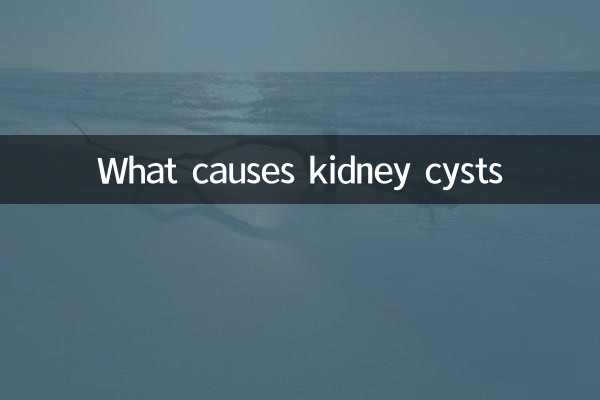The following is aboutWhat causes kidney cystsThe structured articles are compiled from popular topics and hot contents on the entire network in the past 10 days.
What causes kidney cysts?
Renal cysts are a common kidney disease that usually manifests as fluid-filled cystic structures in the kidneys. Although most renal cysts are benign, if not paid attention or treated in time, it can cause a range of health problems. The following are the possible consequences of renal cysts and related data analysis.

1. Main types and characteristics of renal cysts
| type | Features | Incidence |
|---|---|---|
| Simple renal cyst | Single hair, round, thin walls, mostly benign | About 50% of people over 50 |
| Polycystic kidney | Hereditary, multiple cysts in both kidneys, which may cause renal failure | 1/400-1/1000 |
| Complex renal cyst | Thickening, calcification or separation of the capsule wall, beware of possible malignancy | About 5%-10% of patients with renal cysts |
2. Health problems that may cause renal cysts
1.Renal impairment: Polycystic kidney or large cysts may compress normal renal tissue, leading to a gradual decline in renal function and even development into renal failure.
2.Risk of infection: The fluid in the cyst may become a breeding ground for bacterial growth, causing pyelonephritis or cyst infection, which manifests as symptoms such as fever and low back pain.
3.hypertension: About 50% of polycystic kidney patients will be accompanied by hypertension, and the kidney blood flow is blocked and the renin secretion is abnormal.
4.Break or bleeding: Larger cysts may rupture under external impact or spontaneous conditions, causing severe pain or internal bleeding.
5.Malignant transformation: Complex renal cysts (Bosniak III-IV) have a higher risk of malignancy and require surgical intervention.
3. Recent hot topics
| topic | Attention | Core content |
|---|---|---|
| What should I do if a renal cyst is found during a physical examination? | High fever | Experts recommend: Asymptomatic cysts below 5cm can be reviewed regularly |
| Distinguishing between renal cysts and renal cancer | rise | CT enhanced scanning is the gold standard, and Bosniak rating is attracting attention |
| Progress in minimally invasive surgery | New technology | Laparoscopic decapsulation surgery has little trauma, and the hospital stay has been shortened to 3 days |
4. Prevention and management suggestions
1.Regular inspections: An ultrasound examination is performed once a year, and the cyst diameter is >4cm and the reexamination interval needs to be shortened.
2.lifestyle: Avoid strenuous exercise (such as boxing, wrestling) and control blood pressure <130/80mmHg.
3.Dietary Care: Patients with polycystic kidney should limit protein intake (0.6-0.8g/kg/day) to reduce caffeine intake.
4.Indications for treatment: Seek medical attention if the following conditions occur: persistent low back pain, hematuria, repeated infection or cyst diameter >5cm.
5. Latest research data (updated in 2023)
| Research Projects | Sample size | Key Discovery |
|---|---|---|
| Observation on the natural course of kidney cyst | 1200 cases | Increased in 5 years: average 2.1mm/year |
| Comparison of minimally invasive surgery efficacy | 436 cases | Recurrence rate: 8.7% of traditional surgery vs 3.2% of laparoscopic surgery |
| Research on assisted treatment of traditional Chinese medicine | Random double blind | Guizhi Fuling Wan can slow down the growth rate of cysts (p<0.05) |
Summary: Most renal cysts are benign lesions, but differentiated response strategies need to be adopted based on type, size and symptoms. Through standardized monitoring and timely intervention, serious complications can be effectively prevented. It is recommended that patients develop personalized management plans based on doctor's advice after discovering renal cysts.

check the details

check the details